How to Propagate Moon Cactus The Easy Way
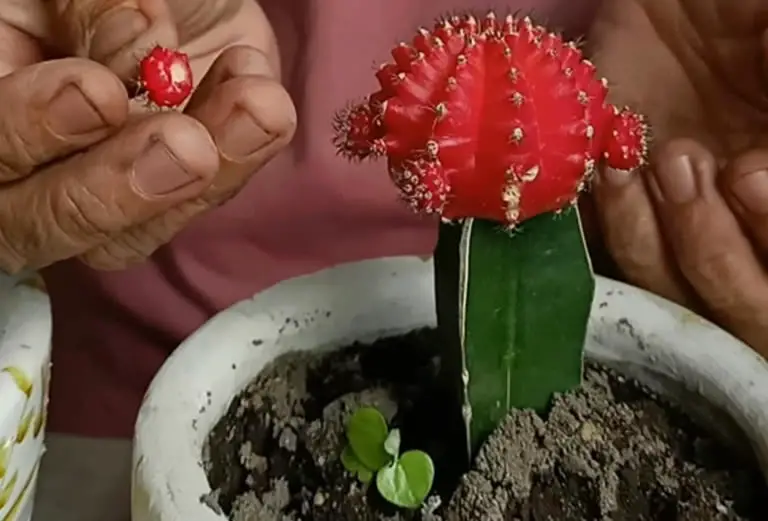
Moon cacti may look like little alien planets, but they’re actually two cacti joined together—making their propagation a bit different from other succulents. In this guide, we’ll walk through how to propagate these colorful beauties, whether you’re starting with seeds or experimenting with grafting.
Table of Contents
Why Moon Cactus Propagation is Unique
Unlike many succulents, moon cacti can’t survive on their own because the top portion—the Gymnocalycium mihanovichii—has no chlorophyll.
It relies on a green cactus base (usually Hylocereus) to photosynthesize and supply nutrients.
So when you propagate a moon cactus, you’re really propagating two plants: the scion (colorful top) and the rootstock (base cactus), and then grafting them together.
How to Graft a New Moon Cactus
Grafting is the most common and effective way to propagate a moon cactus.
In fact it is so popular I covered how it in the article Succulent Propagation: Easy Ways to Multiply Your Favorite Plants.
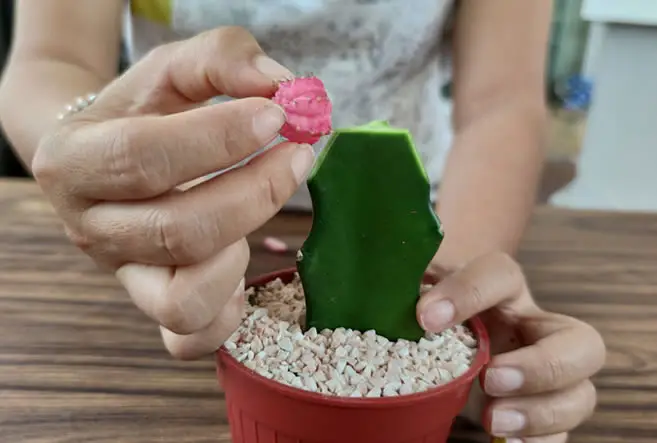
-
Choose your plants: Select a healthy Gymnocalycium (colorful top) and a compatible green cactus base like Hylocereus, Myrtillocactus, or Trichocereus.
-
Sterilize your tools: Use a clean, sharp knife or razor blade.
-
Make the cuts: Slice the top off both cacti to create two flat, clean surfaces.
-
Join them quickly: Align the vascular rings (circular lines in the center of the cactus) and press the Gymnocalycium on top of the rootstock.
-
Secure the graft: Use rubber bands or string to hold the two pieces together tightly.
-
Let it heal: Place the plant in a warm, bright area (no direct sun) and leave it untouched for 1–2 weeks while the graft heals.
Once the graft has taken and the two parts are growing as one, care for it as you would a normal moon cactus.
Growing Moon Cactus from Seed
Moon cactus can be grown from seed, but it takes time and requires later grafting if you want the colorful top to survive.
-
Sow the seeds: Sprinkle Gymnocalycium seeds on the surface of a moist, gritty cactus mix.
-
Provide warmth and humidity: Cover with a clear lid or plastic wrap and place in bright, indirect light.
-
Wait for germination: Seeds usually sprout within 1–3 weeks.
-
Let them grow: Once seedlings are large enough to handle (usually a few months), you can graft the ones that lack chlorophyll onto a rootstock.
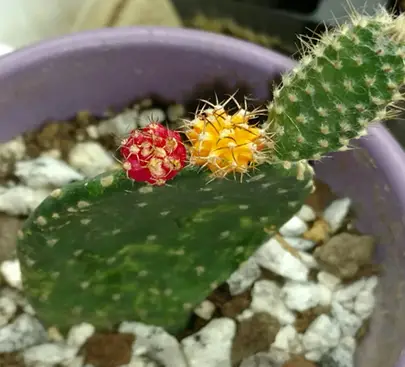
Note: Not all seedlings will lack chlorophyll. Some will be green and can live on their own.
Regrafting a Detached Top
If the colorful top of your moon cactus falls off or begins to rot, you may be able to save it by regrafting.
-
Inspect the scion: Make sure it’s firm and healthy at the center.
-
Trim any damaged tissue: Use a clean blade to remove any rotted parts.
-
Graft onto a new rootstock: Follow the steps above to attach the top to a new healthy cactus.
This method can give your moon cactus a second life.
Bonus Tip for Seedlings
If you’re growing moon cactus seedlings (or rootstock seedlings) in trays, add a few drops of diluted succulent-safe fertilizer (e.g., NPK 2-7-7 like this one) to your misting water every couple of weeks to support steady root development.
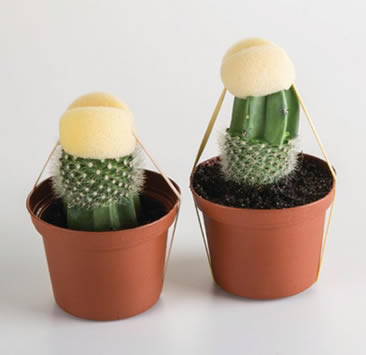
Just go light—moon cactus seedlings are tiny and easy to overfeed.
Best Environment for Propagation
Keep your grafted plants and seedlings in a warm area with bright, indirect light.
Avoid high humidity and make sure there’s plenty of airflow to prevent mold or rot.
Propagating during spring or early summer gives the best results.
Common Issues with Propagation
Failed grafts: Usually from misaligned vascular rings.
Re-cut and try again with a better match.
Scion shriveling or rotting: Caused by too much moisture or a poor graft.
Use fresh tools and reduce watering.
Seedlings dying off: Often from overwatering or poor ventilation.
Let soil dry slightly between mistings and keep lids cracked for airflow.
Popular Moon Cactus Varieties
While Gymnocalycium mihanovichii is the species used in all moon cacti, the color mutations and cultivars are what make them exciting to collect.
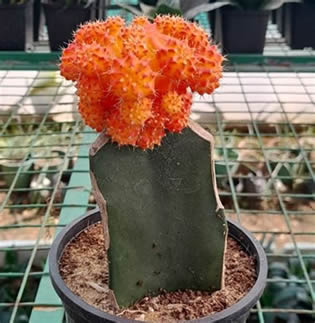
Here are some popular picks seen on Pinterest and in garden centers:
-
‘Hibotan’ (Ruby Ball): Classic red or orange varieties; the most widely sold type.
-
‘Pink Diamond’: Bright pink tops with smooth, round forms.
-
‘Purple Delight’: Deep purple, occasionally with variegated shading.
-
‘Yellow Moon’: Cheerful, lemon-yellow tops that brighten any shelf.
-
‘Orange Flame’: Bold orange with small, rounded ribs.
-
‘Hibotan Nishiki’: Multicolored tops with swirls of pink, yellow, and green.
All of these are propagated the same way and make dazzling additions to mixed arrangements or solo pots.
Final Thoughts
Propagating moon cactus is a bit different from other succulents, but it’s not difficult once you know what to expect.
Whether you’re creating new grafts or starting from seed, it’s a fun and rewarding process that lets you craft colorful little living sculptures.
Take your time, line things up carefully, and enjoy the strange beauty of these grafted wonders.
Be sure to give your newly propagated succulents the best care by following the advice in our article Moon Cactus Care: A Bright, Beginner-Friendly Grafted Cactus.
Thanks for reading! I'm Michael — houseplant fanatic and your Pinterest plant guide.
Follow me on Pinterest for fresh updates 🌿



